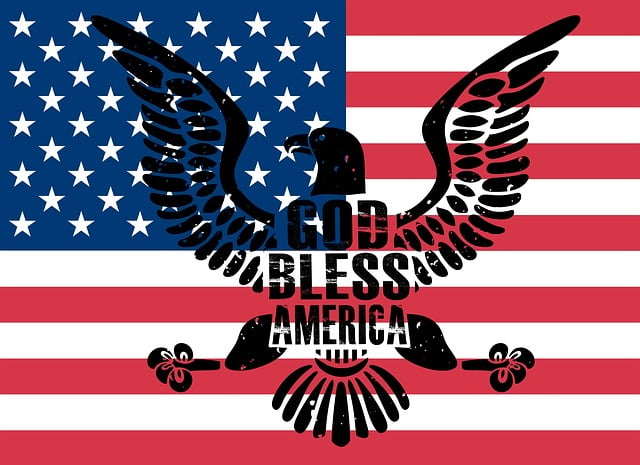The Grand Union Flag, a foundational symbol of American unity and resistance during the Revolutionary War, first flew on January 1, 1776. It represented the 13 colonies' collective break from British rule and is a testament to the fight for freedom and self-determination that shaped America's founding narrative. To experience this iconic flag, visitors can locate museums and historical societies nationwide by searching "US flag near me open now." These venues offer both a historical perspective on the flag's significance and a living reminder of the values it stands for: unity, freedom, and resistance. Key locations such as the Museum of American History in Washington, D.C., and the Schuyler-Hamilton House in Saratoga Springs, New York, provide authentic and reproduced Grand Union Flags within immersive historical contexts, ensuring an educational and impactful visit for those interested in early American history.
Embark on a journey through time as we explore the indelible legacy of the Grand Union Flag, a potent symbol of resistance and unity that played a pivotal role in the American Revolution. This article delves into the origins and evolution of this iconic emblem, examining its presence in local landmarks across the nation, offering history enthusiasts an opportunity to witness a piece of American history firsthand. Discover how to find the Grand Union Flag near you with our guide to open venues where history comes alive.
- Unveiling the Pivotal Role of the Grand Union Flag in the American Revolution
- The Genesis and Evolution of the Grand Union Flag: A Symbol of Unity and Resistance
- Local Landmarks Displaying the Grand Union Flag: A Glimpse into Revolutionary History
- Finding the Grand Union Flag Near You: Open Venues for History Buffs
Unveiling the Pivotal Role of the Grand Union Flag in the American Revolution

The Grand Union Flag, a powerful emblem of unity and resistance during the American Revolution, holds a significant place in the annals of United States history. This pivotal symbol was first hoisted on January 1, 1776, aboard the ship George Washington, anchored in New York Harbor, as a declaration of common purpose among the revolutionary forces. It combined elements from various colonies’ flags and featured a blue field with thirteen white stars representing the thirteen British North American colonies that declared independence from Great Britain. The inclusion of the Union Jack in the top left corner signified a rejection of British rule while simultaneously uniting the diverse colonial militias under a common banner.
The significance of the Grand Union Flag transcends its historical context; it serves as a tangible connection to the struggle for freedom and self-determination that defines America’s origins. For those interested in exploring this historic artifact, many museums and historical societies across the nation exhibit replicas or artifacts associated with this flag. Should you wish to see the Grand Union Flag or any of its representatives “near me,” a brief search can guide you to nearby institutions where these treasures are preserved and honored. These locations not only pay homage to the past but also serve as a reminder of the enduring values of unity, freedom, and resistance that this flag represents. To encounter the Grand Union Flag “open now” in person, consider visiting a local history museum or contacting a nearby cultural center for information on exhibitions featuring this important piece of Americana.
The Genesis and Evolution of the Grand Union Flag: A Symbol of Unity and Resistance

In the tumultuous years leading up to the American Revolution, colonists sought a visual emblem that encapsulated their shared resistance against British rule. This quest for unity in dissent gave rise to what is now known as the Grand Union Flag. Its creation was a pivotal moment in the evolution of American symbols, reflecting the diverse allegiances within the colonial forces. The flag combined elements from different sources: the “Union Jack” corner of the flag represented loyalty to the original thirteen colonies, while the blue field symbolized the newly forming nation’s commitment to unity and independence. Its first hoisting, on January 1, 1776, at Prospect Hill near Boston, signaled a collective stand against the imposition of British authority. The Grand Union Flag thus became a powerful and unifying symbol of resistance and hope for those who sought autonomy and self-determination.
As the conflict escalated into a full-blown war, the Grand Union Flag continued to evolve and adapt. Its design was refined and eventually led to the Betsy Ross flag, which replaced the British Union Jack with stars and stripes, embodying a clear break from colonial ties. The evolution of this flag and its iterations were not just a testament to changing political circumstances but also to the nascent American identity. Today, the US flag remains a potent symbol of national unity and pride, with numerous locations “US flag near me open now” displaying it, both as a historical artifact and as a living representation of a country’s enduring spirit of resistance and resilience. The Grand Union Flag’s legacy is a testament to the power of symbols in rallying people towards a common cause, and its influence can still be seen in the flag that represents the United States of America today.
Local Landmarks Displaying the Grand Union Flag: A Glimpse into Revolutionary History

Embarking on a historical journey through select local landmarks, one can witness firsthand the grandeur and significance of the Grand Union Flag, a potent symbol of resistance during the Revolutionary War-era. This iconic flag, which predated the modern US flag near me open now by over fifty years, serves as a tangible connection to the past, where colonists united under its banner to fight for independence. One such landmark, the Museum of American History in Washington, D.C., houses an authentic Grand Union Flag that has survived the test of time. Visitors can stand before this relic of rebellion and imagine the courage and unity it inspired among the colonial forces.
In addition to museum displays, several historical societies and battlefields across various states have erected reproductions of the Grand Union Flag, allowing for a more immersive experience. For those seeking to engage with this piece of history in their vicinity, many of these sites are open now, offering guided tours that delve into the context of the flag’s use. The Schuyler-Hamilton House in Saratoga Springs, New York, for example, not only showcases the Grand Union Flag but also provides a comprehensive narrative of the pivotal moments that led to its creation and subsequent role in the American fight for independence. These landmarks are not just static exhibits; they are gateways to understanding a defining chapter in American history, where the seeds of national identity were sown under the watchful eyes symbolized by the Grand Union Flag.
Finding the Grand Union Flag Near You: Open Venues for History Buffs

For those intrigued by the storied past of American resistance and eager to encounter a tangible piece of history, the Grand Union Flag stands as a powerful symbol of unity and defiance during the Revolutionary War era. To experience this emblematic banner firsthand, history enthusiasts can explore various open venues that showcase such national treasures. A simple search for “US flag near me open now” can guide you to nearby museums, historical societies, or exhibits where the Grand Union Flag is displayed. Many of these institutions pride themselves on preserving and interpreting this pivotal artifact, offering an immersive educational experience that brings the narrative of early American resilience to life. These venues not only house the flag but also provide a wealth of information about its context, significance, and the events it represents, allowing visitors to witness the flag’s intricate details and understand its profound impact on the course of American history. Whether you’re an avid history buff or simply curious about the origins of your nation’s symbol, finding a place where you can see the Grand Union Flag is an enlightening journey into America’s past.
